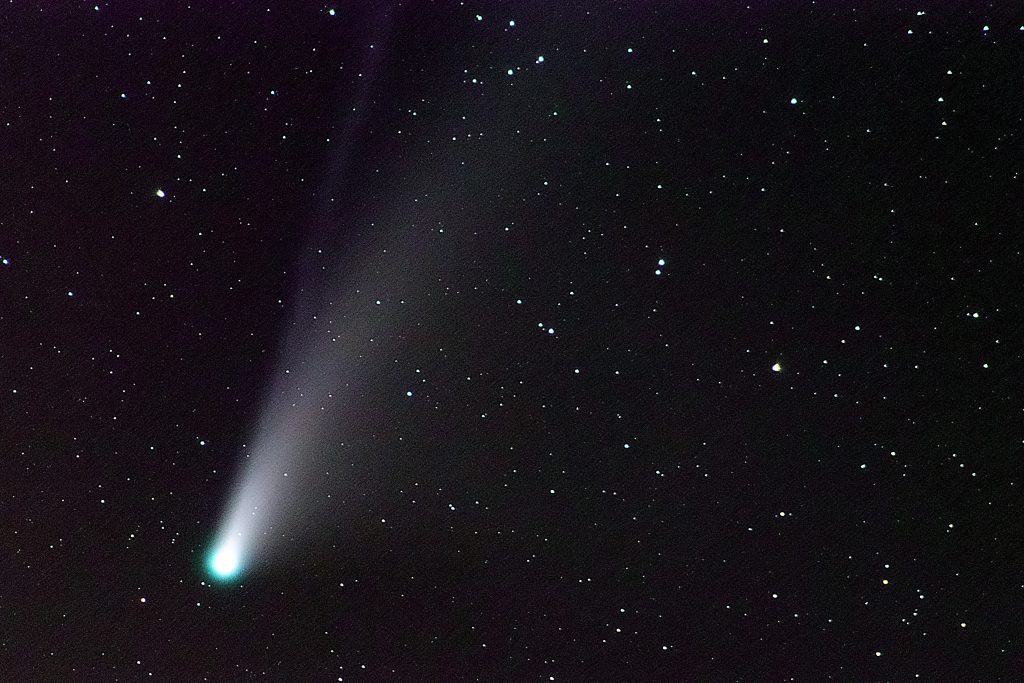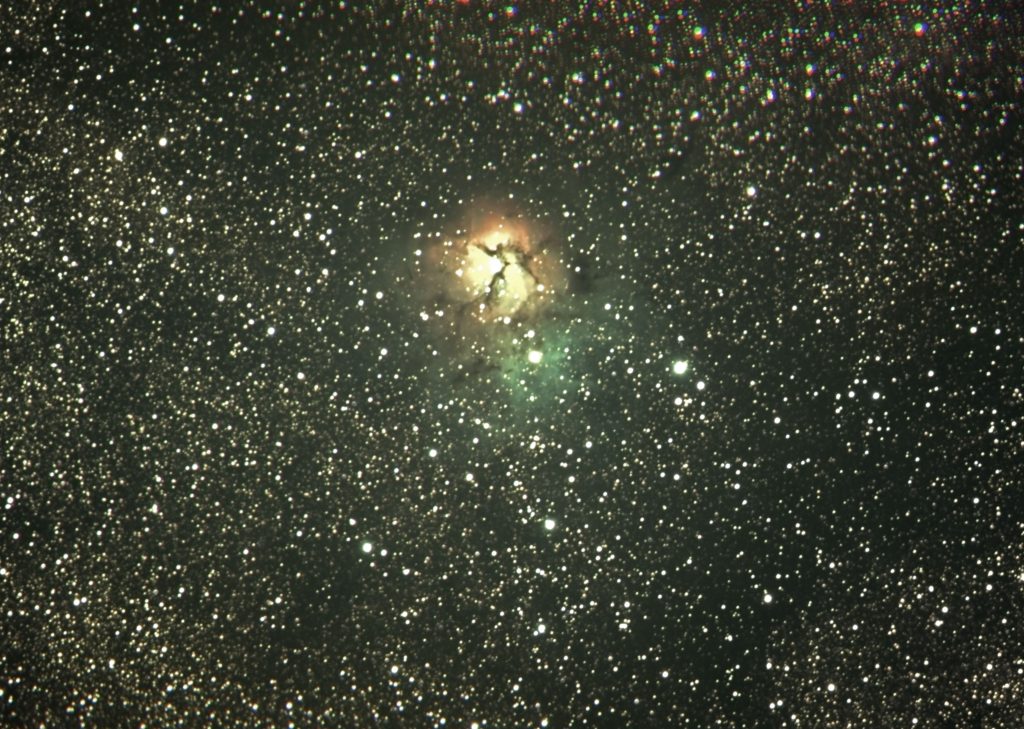During the evening, my Canon EOS 800D somehow got switched from shooting raw and jpeg to just jpeg. Of course, raw has much greater depth so I didn’t expect much from this. This image was made from 38 jpegs, each 60 seconds long at 75mm focal length and ISO 800. I was tracking with my AVX mount. It turned out better than I expected. I processed them in Lightroom and then used that tool’s photo merge option to create this HDR image. Comparing JPEG to RAW might be worth doing even if it is counter intuitive.
The bright stars in the lower right are the stinger of the Scorpion. Messier 7 is the cluster of stars close to the middle and somewhat obscured by the Milky Way while Messier 6 is smaller but in a darker area above and to the right.
Messier 7 was first described by Ptolemy, that Ptolemy, and is visible to the naked eye. It’s among the closer open star clusters at about 1000 light years and contains about 80 stars. Messier 6 wasn’t discovered until the mid-1600s and is about 50% farther away and contains about 50% more stars.




